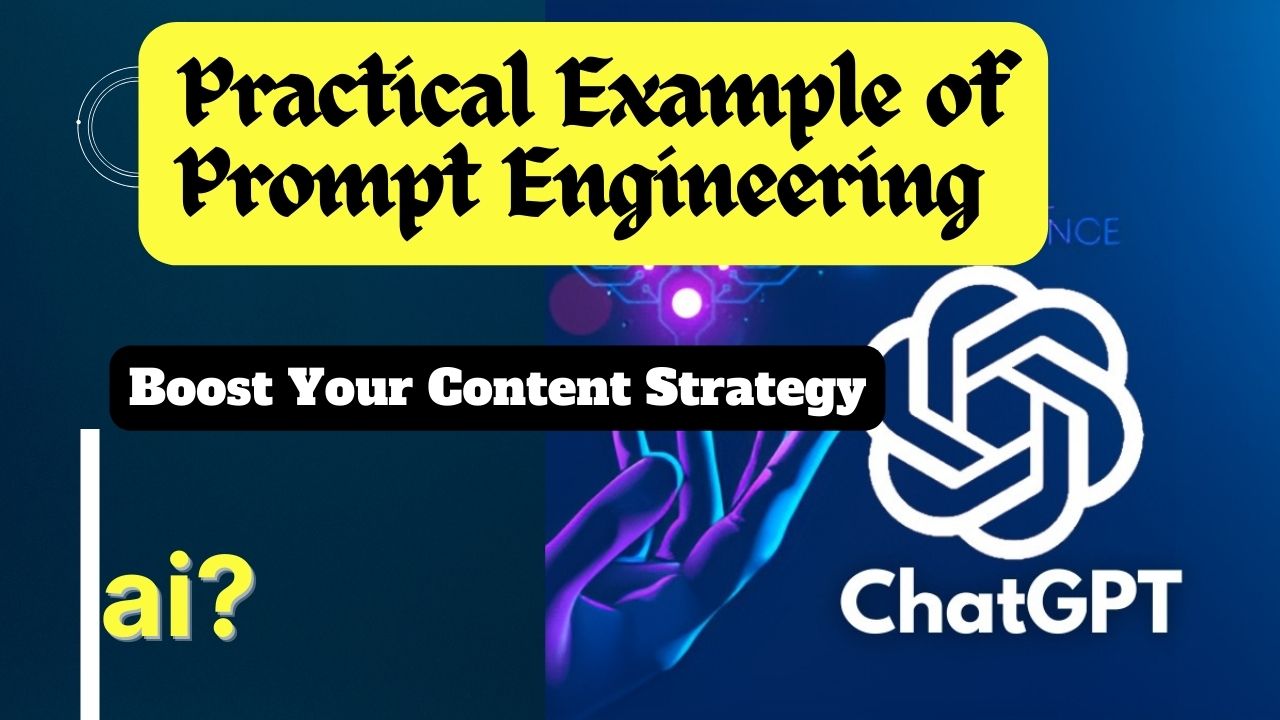Introduction
In the fast-paced digital landscape, staying ahead in content creation and optimization is crucial. One powerful technique that can significantly enhance your content strategy is prompt engineering. In this comprehensive guide, we will delve deep into prompt engineering: A Practical Example. By the end of this article, you'll have a clear understanding of how to leverage this technique to boost your content's effectiveness and reach. Let's embark on this enlightening journey together.
Prompt Engineering: A Practical Example
Prompt engineering, often overlooked, is a game-changer in content creation. It involves crafting carefully designed prompts or queries to stimulate creative thinking and generate unique and engaging content. Here's a step-by-step example of how to employ prompt engineering effectively:
1. Understanding Your Audience
Before diving into prompt engineering, it's essential to know your target audience inside out. Who are they? What are their interests and pain points? Conduct thorough research to gather insights that will shape your prompts.
2. Define Your Objective
Clearly define the purpose of your content. Are you aiming to educate, entertain, or inspire your audience? Understanding your goal will help you create prompts aligned with your content's mission.
3. LSI Keywords Integration
Integrate Latent Semantic Indexing (LSI) keywords into your prompts. These keywords are semantically related to your main keyword and can help improve your content's relevance and search engine ranking.
4. Crafting Effective Prompts
Craft prompts that spark creativity and guide your content creation process. For instance, if your focus keyword is "Digital Marketing," a prompt could be, "Explore the latest trends in digital marketing and their impact on businesses."
5. Content Creation
With your prompts in hand, start creating your content. Ensure each prompt serves as a pillar for a section or subsection of your article. This structured approach keeps your content organized and focused.
6. Engaging Subheadings
Use engaging subheadings to break down your content into digestible sections. This not only improves readability but also helps in optimizing for search engines.
7. Incorporating Real-Life Examples
Enrich your content with real-life examples that resonate with your audience. Practical examples add authenticity and credibility to your content.
8. Visual Aids
Utilize visuals such as images, infographics, and videos to complement your content. Visual aids make complex concepts easier to understand and enhance user engagement.
9. Internal and External Linking
Include internal links to other relevant content on your website. Additionally, add external links to authoritative sources to back up your claims and improve your content's credibility.
10. Proofreading and Editing
Thoroughly proofread and edit your content to ensure it's error-free and flows smoothly. Well-polished content reflects professionalism and builds trust with your audience.
11. Keyword Optimization
Optimize your content by strategically placing your focus keyword and LSI keywords. Maintain a keyword density of around 1.30 to rank higher in search engine results.
12. User-Friendly Formatting
Format your content for a better reader experience. Use a combination of paragraphs, lists, and tables to break up text and make it visually appealing.
13. Mobile Responsiveness
Ensure that your content is mobile-friendly, as a significant portion of users access content on smartphones and tablets.
14. Social Media Sharing
Make it easy for readers to share your content on social media platforms by adding share buttons.
15. Analytics and Monitoring
Track the performance of your content using analytics tools. Monitor user engagement, bounce rates, and conversion rates to refine your content strategy further.
16. Continuous Improvement
Never stop improving your prompt engineering and content strategy. Stay updated with industry trends and adjust your prompts accordingly.
Practical Example of Prompt Engineering : FAQs
Q: What are LSI keywords, and why are they essential?
LSI keywords, or Latent Semantic Indexing keywords, are words or phrases closely related to your focus keyword. They are crucial because they help search engines understand the context of your content better, leading to improved rankings.
Q: How can I find LSI keywords for my content?
You can use keyword research tools like Google's Keyword Planner or third-party tools like SEMrush to discover LSI keywords related to your focus keyword.
Q: Is prompt engineering suitable for all types of content?
Yes, prompt engineering is a versatile technique that can be applied to various types of content, including blog posts, articles, social media posts, and even video scripts.
Q: How long does it take to see results from prompt-engineered content?
The timeline for seeing results can vary, but with consistent application of prompt engineering principles, you can expect to see improvements in your content's performance within a few months.
Q: Can prompt engineering be automated?
There are some AI tools and software that can assist in generating prompts, but the creative aspect of prompt engineering still requires human input and expertise.
Q: Are there any risks associated with prompt engineering?
While prompt engineering is generally a safe and effective strategy, it's essential to avoid keyword stuffing and maintain the quality of your content to prevent potential penalties from search engines.
Conclusion
Prompt engineering is a practical and powerful approach to enhance your content strategy. By following the steps outlined in this guide and incorporating LSI keywords, you can create content that resonates with your audience, improves search engine rankings, and drives engagement. Remember, content creation is an ongoing process, so continuously refine your prompt engineering skills and adapt to evolving trends. Get started today and watch your content strategy soar to new heights!
























